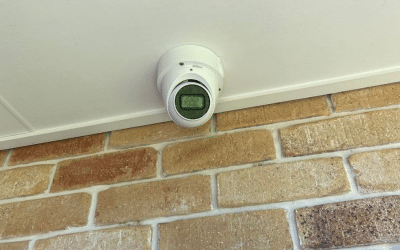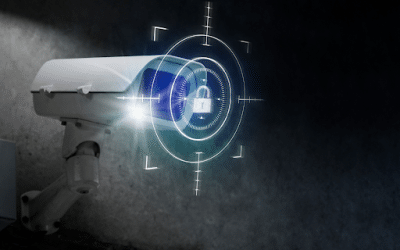As a resident in Brisbane, it’s important to have a comprehensive understanding of how your home’s electrical system works. This knowledge empowers you to make informed decisions, troubleshoot minor issues, and communicate effectively with electricians when needed.
By decoding your home’s electrical system, you can prevent potential hazards, optimize energy consumption, and even embark on small DIY projects with confidence. This comprehensive guide aims to provide you with the knowledge and insights necessary to navigate your electrical system effectively.
Whether you’re a new homeowner or have been residing in your property for years, this guide will help you gain a deeper understanding of the components, wiring, circuits, outlets, switches, and safety precautions associated with your home’s electrical system. With this knowledge, you’ll be better equipped to manage your electrical needs and ensure the safety and efficiency of your home.
In the following sections, we will explore the basics of electrical systems, discuss the components involved, delve into electrical wiring and circuits, examine outlets and switches, address safety and maintenance practices, and even touch upon upgrades and home electrical projects. By the end of this guide, you’ll have a comprehensive understanding of your home’s electrical system and be able to make informed decisions to keep your household safe and powered efficiently.
So, let’s begin our journey of decoding your home’s electrical system, empowering you to take control of your electrical usage and create a safe and comfortable living environment for you and your family in Brisbane.
Understanding Basic Electrical Concepts
To truly appreciate the complexity of your home’s electrical system, it’s essential to grasp a few basic electrical concepts. Armed with this understanding, you’ll be better positioned to appreciate the operations and safety measures involved in your Brisbane home’s electricity distribution.
Electricity 101
Electricity, simply put, is the flow of electric charge. This unseen force powers everything from your morning toast to your late-night Netflix binges. But to understand electricity, it’s important to delve a little deeper.
Explaining the Fundamentals of Electricity
Electricity involves the movement of subatomic particles called electrons. These particles, driven by the force of an electric field, transfer energy from the power source (like a battery or your home’s electrical grid) to your appliances.
Understanding Voltage, Current, and Resistance
Three fundamental properties describe electricity: voltage, current, and resistance, often explained using water flow as an analogy.
- Voltage, measured in volts (V), is akin to the water pressure in a hose—it’s the force that pushes electric charge through a conductor.
- Current, measured in amperes (A), is like the water flow rate—it represents the amount of electric charge flowing per unit time.
- Resistance, measured in ohms (Ω), is equivalent to any obstruction to the water flow—it opposes or resists the flow of electric charge.
Electrical Circuits
Your home is brimming with numerous electrical circuits, each designed to supply electricity to specific areas or appliances. Let’s understand what these circuits are and how they work.
Defining Electrical Circuits and Their Components
An electrical circuit is a closed loop through which electricity can flow. It typically consists of a power source (like a battery or your home’s electrical supply), a load (an electrical device), and conductive materials (wires) to connect them.
Exploring Series and Parallel Circuits
There are two basic ways to arrange components in a circuit: series and parallel. In a series circuit, components are arranged end-to-end, meaning the electricity has only one path to follow. All the components in a series circuit share the same current.
In a parallel circuit, components are arranged side-by-side, meaning the electricity has multiple paths to follow. Each path is independent of the other, so if one device fails, others can still function. Most circuits in your home are parallel circuits to ensure continuous operation even when one appliance switches off or malfunctions.
Electrical Components in Your Home
Understanding your home’s electrical system begins with familiarizing yourself with its primary components. Each part plays a significant role in the safe and efficient distribution of electricity throughout your Brisbane home.
Electrical Panel
Your home’s electrical panel, often referred to as the “breaker box,” is like the heart of your electrical system. It distributes power coming from the grid to the various circuits within your home.
Exploring the Main Electrical Control Center
The electrical panel is equipped with circuit breakers designed to protect your home by ‘tripping’ or shutting off power to the part of your home they feed if they detect overloading or a short circuit. Inside this control center, you’ll find rows of switches with numbers denoting their amperage rating, which varies depending on the electrical demand of the area they serve.
Understanding Circuit Breakers and Fuses
Circuit breakers and fuses serve the same purpose – they prevent electrical overloads and short circuits. Circuit breakers, however, can be reset after they trip, while fuses need to be replaced. Both these devices are crucial in ensuring that your home’s electrical system operates safely.
Outlets and Switches
These are perhaps the most interacted-with components of your home’s electrical system. They provide a connection point for your appliances and devices, and control their power supply.
Differentiating Between Types of Outlets and Switches
There are different types of outlets and switches to cater for various needs and safety requirements. Outlets can range from standard ones, usually used for low power appliances, to higher capacity versions for large appliances like ovens or dryers. Similarly, switches vary from the common light switches to dimmer switches that adjust the light intensity.
Explaining GFCI and AFCI Outlets
GFCI (Ground Fault Circuit Interrupter) and AFCI (Arc Fault Circuit Interrupter) outlets provide extra safety measures. A GFCI outlet protects against dangerous ground faults and is usually installed in areas where water and electricity may interact, like bathrooms or kitchens. On the other hand, AFCI outlets protect against arc faults, which can cause electrical fires, making them vital throughout your home.
Wiring and Cables
Behind the scenes, your home’s electrical wiring and cables carry power from the electrical panel to the outlets and switches and then to your devices and appliances.
Understanding Different Types of Wiring
Several types of wiring are used in homes, each designed for a specific application. For example, non-metallic (NM) cable, often referred to as “Romex,” is common in residential use, while underground feeder (UF) cable is used for outdoor applications and damp areas.
Exploring the Importance of Proper Cable Management
Proper cable management is essential for both safety and efficiency. Tangled or improperly installed cables can lead to hazardous situations, including fires. Moreover, organized wiring ensures easier accessibility for maintenance and troubleshooting. So, whether you’re setting up a new home entertainment system or undertaking significant renovations, remember that proper cable management is a crucial aspect of a safe and effective electrical system.
Residential Electrical Systems
Navigating the electrical labyrinth of your home may seem daunting. But once you understand its structure and operations, you’ll find it’s quite a well-organized system. Here we delve into the types of electrical systems typically found in homes, as well as crucial safety mechanisms like grounding and bonding.
Single-Phase vs. Three-Phase Systems
Electricity arrives at your Brisbane home through either a single-phase or a three-phase system. The difference lies in how power is delivered from the electrical grid to your property.
Understanding the Difference Between Single-Phase and Three-Phase Systems
In a single-phase system, power is delivered through a single wire and returns through another. This system is simple, cost-effective and perfectly suitable for most residential properties where heavy-duty appliances are not regularly used.
In contrast, a three-phase system delivers power through three wires, with each wire carrying current that reaches its peak at a different time. This system is typically employed in commercial and industrial settings or residences with high electricity demands.
Exploring Applications and Benefits
The single-phase system, being straightforward and economical, meets the needs of most homes in Brisbane, powering everyday appliances like your refrigerator, washing machine, and air conditioner.
On the other hand, three-phase systems offer a more efficient power supply, especially for high-load appliances. For instance, if you’re running a home business with heavy machinery or have installed an electric vehicle charging station, a three-phase system would be more suitable.
Grounding and Bonding
The terms ‘grounding’ and ‘bonding’ might sound like jargon, but they are critical safety measures in your home’s electrical system.
Explaining the Purpose and Importance of Grounding
Grounding provides a direct pathway for electrical energy to travel safely into the earth in the event of a short circuit. By doing so, it prevents the harmful or even lethal effects of electrical shock that could occur if the stray electricity were to pass through a person. It also helps prevent electrical fires that could result from overheated wires or systems.
Understanding Bonding for Safety and Protection
While grounding creates a safe path for electricity to discharge into the earth, bonding is a strategy to ensure all metal parts in an electrical installation are carrying the same electrical potential. This eliminates the chance of a voltage difference developing between separate parts, which could lead to an electric shock. In essence, bonding brings uniformity to the electrical potential of the entire system, making it safer for the occupants of the house.
Electrical Safety Measures
Understanding and following safety precautions are vital when dealing with your home’s electrical system. Despite the various safety features designed into these systems, improper use can still lead to accidents. Let’s explore some essential safety tips and understand when and how to engage a professional electrician.
Safety Precautions at Home
Every Brisbane homeowner should be aware of basic electrical safety measures. These not only help in preventing electrical accidents but also ensure the longevity of your home’s electrical system.
Tips for Safe Electrical Practices in the Home
Always ensure your hands are dry when operating electrical switches or appliances to avoid electric shocks. Never overload power outlets with too many devices as it can lead to overheating and potentially start a fire. It’s also important to be mindful of power cords – keep them out of high traffic areas to prevent tripping hazards and avoid running them under carpets or rugs where they can overheat.
Avoiding Electrical Hazards and Accidents
Promptly address any warning signs of electrical problems such as flickering lights, burning smells, or frequently tripping circuit breakers. Childproof your outlets if you have young ones in the house to prevent accidental shocks. Lastly, always remember that water and electricity don’t mix – avoid using electrical appliances near water and ensure your outdoor outlets are weatherproofed.
Hiring Professional Electricians
Certain electrical tasks go beyond the realm of DIY and require professional attention. Knowing when to call an electrician and how to choose one is just as important as any safety measure.
Knowing When to Seek Professional Assistance
It’s time to call a professional when dealing with major electrical problems or tasks such as extensive wiring issues, installing new electrical circuits, replacing your electrical panel, or when your home’s power is out, but your neighbours’ isn’t. Any work that feels beyond your comfort zone should also be left to professionals.
Tips for Choosing a Qualified Electrician
When choosing an electrician, look for licensed and insured professionals – this ensures they have the necessary training and are covered in case of accidents. Check reviews or ask for references to gauge their reputation. It’s also important to compare quotes from different electricians. Remember, the cheapest quote isn’t always the best, especially if it compromises on safety or quality. Finally, a good electrician will always be willing to answer your questions and explain their work to you.
Common Electrical Issues and Troubleshooting
Your home’s electrical system, like any other complex structure, can sometimes face issues. From power outages to faulty wiring, these problems can be a source of inconvenience or even danger. However, with a little knowledge, you can identify these issues and understand how to deal with them.
Power Outages and Electrical Surges
Power outages and surges are common issues that can affect any household. They can be a mere annoyance or, in some cases, can cause significant damage to your electrical appliances.
Understanding Causes and Solutions for Power Interruptions
Power outages can occur due to several reasons, including bad weather, power grid failures, or problems with your home’s electrical system. If the outage is limited to your home, check your main switchboard to see if a circuit breaker has tripped or a fuse has blown. If everything seems normal, it’s time to contact your power provider or a licensed electrician.
Protecting Electronics from Surges
Electrical surges, usually caused by lightning strikes or power grid disruptions, can damage your electronics. Installing surge protectors can help shield your expensive appliances and devices. These devices absorb excess voltage and prevent it from reaching your appliances, thus ensuring their longevity.
Faulty Wiring and Circuit Overloads
Faulty wiring and circuit overloads can not only disrupt your daily routine but also pose serious safety risks.
Identifying Signs of Faulty Wiring
Signs of faulty wiring include frequent tripping of circuit breakers, dimming or flickering lights, burning smell from outlets or switches, and discoloured or sparking outlets. If you observe these signs, it’s best to turn off your power and contact a licensed electrician immediately.
Preventing Circuit Overloads and Potential Hazards
Circuit overloads occur when too many devices draw power from a single circuit simultaneously. To prevent this, distribute your high-wattage appliances across multiple circuits and avoid using multiple high-power devices on the same outlet. If a circuit breaker frequently trips, it could be a sign of an overloaded circuit and should be evaluated by a professional.
Energy Efficiency and Electrical Conservation
While understanding your home’s electrical system is essential, knowing how to use electricity more efficiently is equally crucial. Not only does it save you money on energy bills, but it also contributes to environmental sustainability. Let’s explore some energy-saving practices and alternative energy sources for your Brisbane home.
Energy-Saving Practices
Smart and simple energy-saving practices can significantly reduce your home’s electricity consumption. From how you use your appliances to what technologies you adopt, every bit counts.
Tips for Reducing Electricity Consumption
Adjusting your daily routines can lead to big savings. For example, use natural light as much as possible during the day, turn off appliances when not in use, and choose energy-saving modes on your devices. Don’t forget about your heating and cooling system – a well-insulated house reduces the load on your air conditioner or heater.
Implementing Energy-Efficient Technologies
Investing in energy-efficient technologies like LED lighting, high-efficiency appliances, and programmable thermostats can also reduce your electricity consumption. While these may have a higher upfront cost, they often pay for themselves over time through reduced energy bills.
Alternative Energy Sources
As we continue to face environmental challenges, alternative and renewable energy sources are becoming increasingly important.
Exploring Renewable Energy Options for the Home
Renewable energy options for your home include solar panels, wind turbines, and hydroelectric systems. Among these, solar and wind power systems are the most accessible and practical for most Brisbane homeowners.
Understanding Solar and Wind Power Systems
Solar power systems use photovoltaic panels to convert sunlight into electricity, while wind power systems use wind turbines to generate electricity. Both systems can reduce dependence on the grid and even provide excess power that can be sold back to the electricity company. To decide which is right for your home, consider factors such as local climate, property size, and budget. Always consult a professional for the best advice.
Summary
Understanding your home’s electrical system is not just about being able to navigate a power outage or tripped circuit. It’s about ensuring your home runs efficiently and safely. It empowers you as a homeowner, helping you make informed decisions about energy conservation, electrical repairs, and improvements.
We’ve taken a deep dive into the intricate world of your home’s electrical system. We started by deciphering the various components, from the electrical panel to the outlets, switches, and wiring. We then delved into basic electrical concepts that govern the operation of these components, demystifying terms like voltage, current, resistance, and circuits.
Next, we examined the specifics of residential electrical systems, explaining the differences between single-phase and three-phase systems and the importance of grounding and bonding. Understanding these elements provides a foundation for comprehending how your home’s electrical system functions and how to maintain it.
We also covered essential safety measures, giving you tips for safe electrical practices and explaining when it’s time to call a professional electrician. As homeowners, our safety and that of our families are paramount, and knowing how to act and when to seek help is critical.
Through discussing common electrical issues like power outages, electrical surges, faulty wiring, and circuit overloads, we aimed to equip you with the knowledge to identify and respond appropriately when these problems arise.







